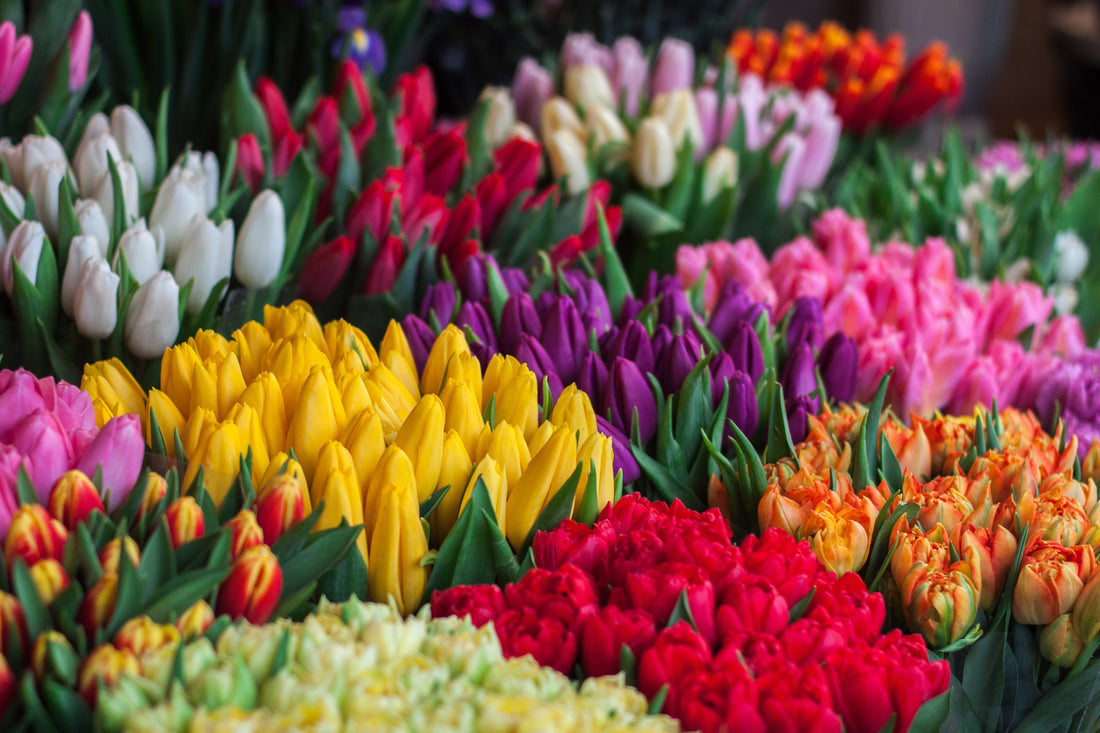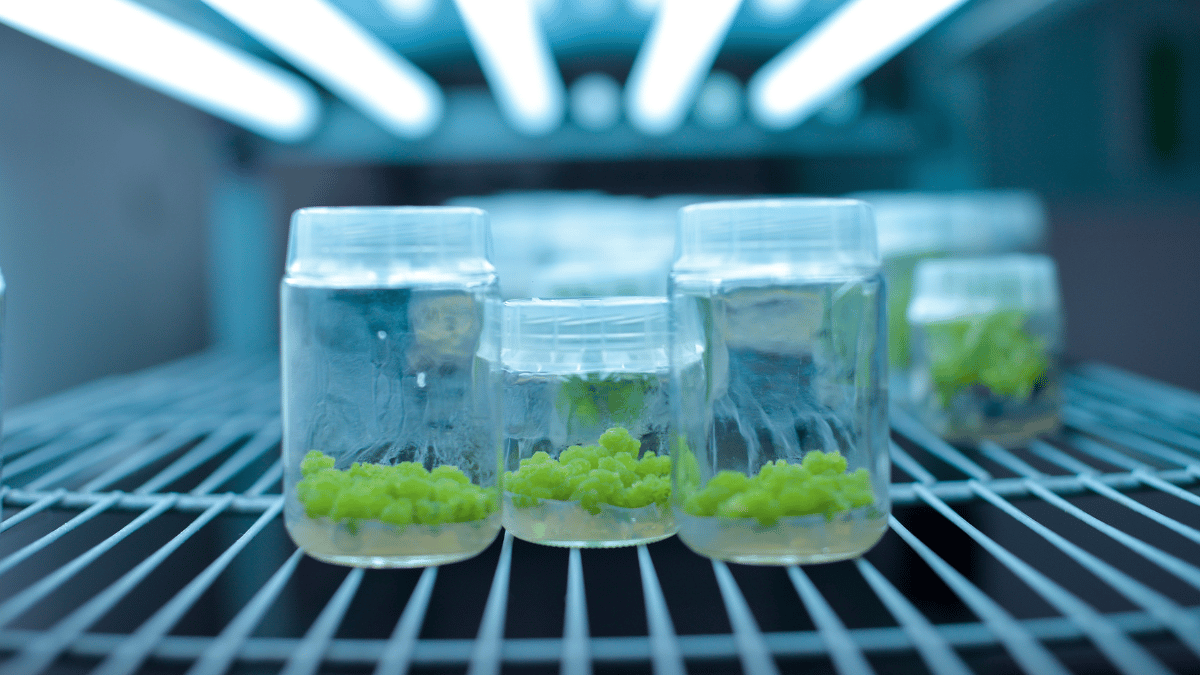
Tissue Culture of Ornamental Plants: Current Development and Future Prospects
As a content and community manager, I leverage my expertise in plant biotechnology, passion for tissue culture, and writing skills to create compelling articles, simplifying intricate scientific concepts, and address your inquiries. As a dedicated science communicator, I strive to spark curiosity and foster a love for science in my audience.


Conventionally, ornamental plants can be grown using seeds or stem cuttings. However, these methods are not effective when it comes to meeting the commercial demand and growing these plants on a large scale.
Who doesn’t love flowers?
Because of their beauty, fragrance, and diversity in shape and colors ornamental plants are quite popular among people worldwide. They are commercially propagated as hanging plants, pot plants, bedding plants, cut flowers, lawn and turf, shrubs, aquatic plants, and ornamental trees.
We use them in house decoration, as gifts for loved ones, food items, home gardening, party decoration, ayurvedic medicines, and many other applications. Moreover, these plants are also beneficial to the environment, as they have the potential to reduce temperatures in the ambient environment. Growing these plants indoors is also good for mental well-being.
The skyrocketing demand for these plants opens a wide door for plant businesses to build a system to fulfill these demands and make money.
Conventionally, ornamental plants can be grown using seeds or stem cuttings. However, these methods are not effective when it comes to meeting the commercial demand and growing these plants on a large scale.
For this purpose, tissue culture is used as an alternative technique. The technique enables growers to grow a variety of ornamental plants in small spaces and on a large scale. Moreover, the technique also enables culturists to introduce a new trait or create a new variety of plants. For example, plants with improved quality and yield, plant architecture, vase life, and disease resistance.
However, it requires a bit more attention and cares to maintain the aseptic environment for plants to prevent contamination and maintain a suitable environment for the growth and development of plants.
In this article, you will learn more about the current developments in the ornamental plant industry and future prospects for the tissue culture of these plants.
Tissue Culture of Ornamental Plants
Tissue culture is a technique in which a small piece of tissue from any part of the plant is collected and placed on a media containing all the elements required for the growth and development of the plant. The cultured plant is then incubated in a suitable environment containing the right temperature and humidity.
One essential requirement of tissue culture is the maintenance of an aseptic condition throughout the process.
Factors affecting the tissue culture of ornamental plants:
- Source of explant
- Age and size of explant
- Nutrient media composition
- Environmental factors, like temperature and humidity
- Genotype of plants
Current Development in Tissue Culture of Ornamental Plants
Below is a list of tissue culture techniques and their applications in growing a particular ornamental plant.
- Clonal propagation techniques have been used to culture Dracaena deremensis, Rosa multiora, Rhododendron, Spathiphyllum, and Ficus benjamina.
- In vitro organogenesis has been successfully applied in growing plants like cyclamen, Heuchera sanguinea, Begonia, Saintpaulia ionantha, and Alocasia micholitziana.
- Growing rose plants have challenges like low sexual reproduction and poor germination. Thus, in such a case embryo rescue has been successfully used to grow the plants with increased quality and yield.
- The thin cell layer tissue culture technique has much better efficiency than the conventional tissue culture techniques. Moreover, it’s suitable to achieve goals like virus elimination when used with antiviral compounds. The technique has been used to grow a wide range of floriculture plants, such as geranium, P. hybrida, S. ionantha, and R. hybrida.
- Somatic embryogenesis is an effective tissue culture technique. It’s most suitable to achieve fast and large-scale plant propagation. The technique has been successfully used to culture a range of ornamental plants, such as Rose, Chrysanthemum (Dendrathema grandiorum), Cyclamen persicum, Begonia gracilis, E. Pulcherrima, Saintpaulia ionantha cv. Benjamin, Gladiolus and Caladium.
- Direct somatic embryogenesis has applications in growing a spectrum of orchids, including, Dendrobium, Malaxis, Tolumnia-related genus, Oncidium, Epipactis, Phalaenopsis, Tolumnia-related genus (Oncidium), Rhynchostylis, and Anthurium.
Future Prospects in Tissue Culture of Ornamental Plants
Tissue culture is an effective tool for the commercial propagation of ornamental plants. However, to scale up the production there’s a need to introduce more efficient and effective procedures. Moreover, it’s also essential to losing the cost of the overall production of the plants.
Below is a list of prospective development in growing ornamental plants using a particular tissue culture technique:
- Bioreactors are an efficient way to grow ornamental plants on a commercial scale. However, the major challenge associated with the technique is a high risk of contamination. Thus, proper precautions need to be taken or ways should be developed to minimize the risk of contamination and boost production.
- The tissue culture technique combined with biotechnological tools, such as genome editing and gene silencing, can be an excellent approach to scale up the in vitriol production of ornamental plants, introduce new varieties, and enhance the quality and yield of plants.
- Large-scale production of ornamental plants can also be made possible using direct shoot bud formation without any intermediate stage, such as the formation of callus tissues, using suitable explants.
- Thin cell layer culture is a more efficient technique compared to other tissue culture approaches. Thus, apart from virus elimination, it can be useful to improve ornamental and floriculture crops.
Enhance Your Tissue Culture Experiences With PCT Products and Equipment
Plant Cell Technology is helping tissue culturists worldwide by providing unique and world-class products and services that smoothen their process. It has MS media, agar, gellan gum, Plant Preservative Mixture (PPM), culture vessels, Biocoupler (TM), and masks in its store to facilitate your processes.
And, that’s not it! Plant Cell Technology also offers consultation services to culturists of all sizes that help to get instant solutions to your tissue culture problems.
You can either book a one-on-one consultation call or a physical visit to your lab. We help you at every step of the tissue culture process, ranging from establishing a tissue culture lab to preventing contamination problems or any specific challenges in your process.
If you’re a cannabis culturist, we have unique consultation services for your to get your processes going.
So, visit plantcelltechnology.com today and learn more about our products and services and how they help you excel in your tissue culture processes.
Happy Culturing!
Blog Categories
View by Level
Popular Blogs

Callus Culture: Definition and Applications
Introduction Tissue culture is not just one technique! Yes, you heard right! As you know, tissue culture is an advanced...
Read More
6 Plant Tissue Culture Books to Keep Learning
Introduction Most of us are fans of books when it comes to learning a topic in detail and in a...
Read MoreSubscribe to Our Newsletter







Join the conversation
Your email address will not be published. Required fields are marked